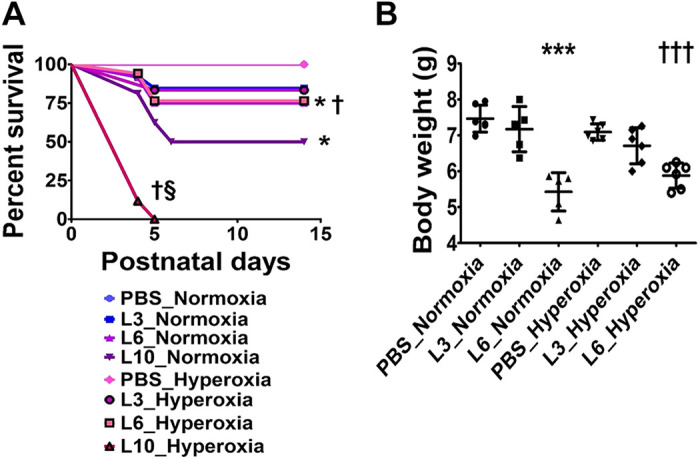Fig. 1.

Effects of early LPS and hyperoxia exposure on the survival rate (A) and body weight (B) of C57BL/6J wild-type mice. Newborn C57BL/6J wild-type mice were treated intraperitoneally with 3 (L3), 6 (L6), or 10 (L10) mg/kg of LPS or vehicle (PBS) on postnatal days (PNDs) 3–5 and exposed to 21% (normoxia) or 70% (hyperoxia) during PNDs 1–5. Their survival and weight gain were monitored until PND 14. A: percentage survival of PBS- and LPS-treated mice exposed to normoxia or hyperoxia (n = 9–17/group). Significant differences between PBS- and LPS-treated mice are indicated by *P < 0.05 under normoxic conditions and by †P < 0.05 under hyperoxic conditions. Significant differences between treatment-matched mice under normoxic and hyperoxic conditions are indicated by §P < 0.05 (Log-rank [Mantel-Cox] test). B: body weight (g) of PBS- and LPS-treated mice exposed to normoxia or hyperoxia. Values are expressed as means ± SD (n = 5 or 6/group). Significant differences between PBS- and LPS-treated mice are indicated by ***P < 0.001 under normoxic conditions and by †††P < 0.001 under hyperoxic conditions.
